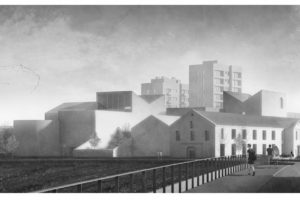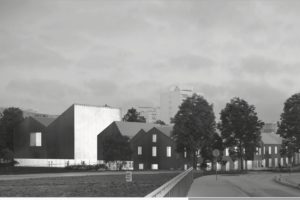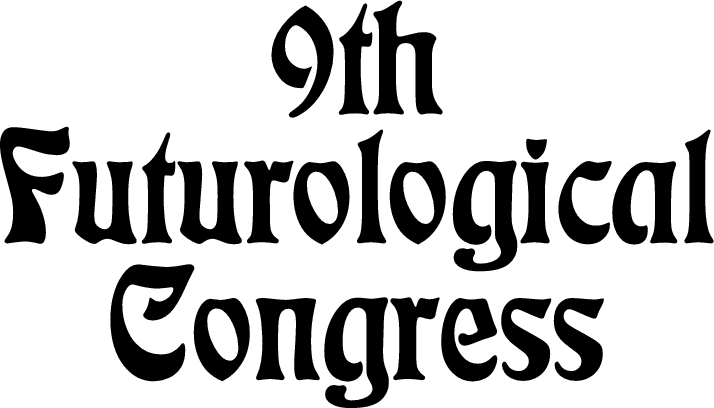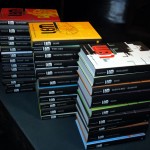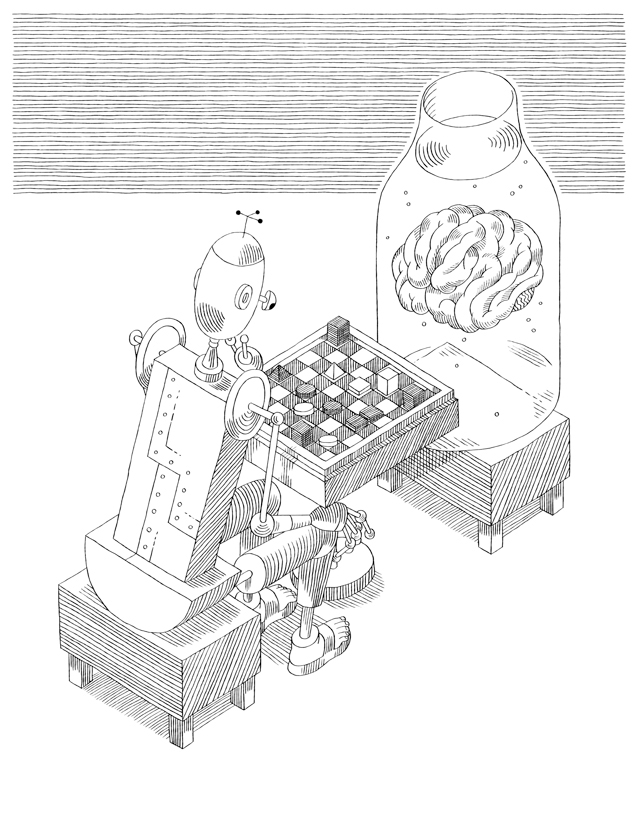Below please find the final five (from 44) architectures projects of the “Planet Lem” — a Literature and Language Centre in Krakow dedicated to Stanislaw Lem.
Category Archives: news
“Autor Solaris” trailer
11th anniversary of Lem’s death
Tribute from Polat Yarisci (based on drawings by Daniel Mróz).
9th Futurological Congress
The Eighth World Futurological Congress was held in Costa Rica… Each speaker was given four minutes to present his paper, as there were so many scheduled-198 from 64 different countries. To help expedite the proceedings, all reports had to be distributed and studied beforehand, while the lecturer would speak only in numerals, calling attention in this fashion to the salient paragraphs of his work. To better receive and process such wealth of information, we all turned on our portable recorders and pocket computers (which later would be plugged in for the general discussion). Stan Hazelton of the U.S. delegation immediately threw the hall into a flurry by emphatically repeating: 4, 6, 11, and therefore 22; 5, 9, hence 22; 3, 7, 2, 11, from which it followed that 22 and only 22!! Someone jumped up, saying yes but 5, and what about 6, 18, or 4 for that matter; Hazelton countered this objection with the crushing retort that, either way, 22. I turned to the number key in his paper and discovered that 22 meant the end of the world.
Stanislaw Lem “The Futurological Congress”
“The Futurological Congress” is Ijon Tichy’s grotesque report written by Stanislaw Lem in the early seventies. It presents an overpopulated and overexploited Earth of the first half of the 21st century, whose herded residents seek refuge in pharmacologically synthesized collective hallucinations. Lem’s satirical vision contesting popular futurological visions of that time remains a clear warning against the greed of consumer societies willing to yield to their desires at the irreversible expense of our planet’s ecosystem.
Half a century later, Lem’s message becomes even more relevant. This is shown by the Ninth Futurological Congress project, a form of an artistic manifesto, whose authors took the book’s appeal seriously: we don’t stand idly by when we hear the cry of “Man the pumps!”.
The initiators and main organizers of the conference are Mareike Dittmer (co-publisher of the “Frieze Magazine”) and the artist Julieta Aranda (the founder and editor of www.e-flux.com) — both influential in the art world.

9th Futurological Congress, Ufficio Primo, Warsaw 2016 (fot. by Mikolaj Sekutowicz)
the weight of Lem’s literary output
5 Bonerowska Street, Krakow
Stanislaw Lem (1921-2006) was born in Lvov where he also spent his youth. He was twenty-four when he arrived in Krakow with one of the last waves of repatriates. Until the very end the Lems believed their beloved city would stay within the borders of Poland and decided to leave only when presented with the perspective of becoming Soviet citizens, hastily selling off all property. The only valuable item Lem managed to save was an „Underwood” typewriter, a gift from his father for his twelfth birthday.
They arrived in Krakow in 1945. For the next eight years they shared a meager two-bedroom apartment with the Kolodziejs family at Slaska Street. They were poor; Stanislaw Lem considered working as a welder, which was a well paid job at that time, but his father persuaded him to continue to study medicine. Lem followed this advice, however he refused to take the last exams, as it turned out that all graduates were becoming military doctors — for life.
To support the family he started writing stories and poems. In 1947 he wrote the „Hospital of Transfiguration”. Because that book was published only after Stalin’s death in 1951, Lem’s „official first novel” became „The Astronauts,” a science fiction story enthusiastically received by readers of the eastern block.
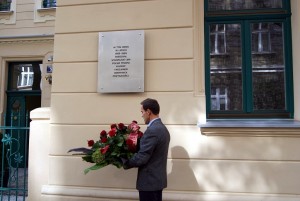
In this house in the years 1953-1959 lived Stanislaw Lem — Polish writer, philosopher, visionary and explorer of the future.
Despite extraordinary imagination and a gift for prognoses probably even Lem himself could not have predicted in those bleak and difficult times that, sixty years later, the building at 5 Bonerowska Street would bear a plaque commemorating his residence there as a world-renowned writer, philosopher and futurologist. The unveiling of the plaque took place on September 12, 2015 — to commemorate Stanislaw Lem’s 90th birthday and to mark an important place on Krakow’s literary map.
“Robot…” – a graphic novel
 “Timof comics” has published a graphic novel entitled “Robot…” – an adaptation of two stories by Stanislaw Lem. The drawings are the work of a Polish couple living in London. The artists’ previous achievements include a well-received comic adaptation of Bulgakov’s “Master and Margarita”.
“Timof comics” has published a graphic novel entitled “Robot…” – an adaptation of two stories by Stanislaw Lem. The drawings are the work of a Polish couple living in London. The artists’ previous achievements include a well-received comic adaptation of Bulgakov’s “Master and Margarita”.
Danuta Schejbal, a graduate of the Warsaw Academy of Fine Arts and a stage and costume designer of the Cherub Theatre Company adapted “The Uranium Earpieces” from Lem’s “Mortal Engines”.
Andrzej Klimowski, a graphic designer, illustrator, painter and creator of animations is a professor at the Royal College of Art, London. His contribution to the volume is the interpretation of the climatic story “The Sanatorium of Dr. Vliperdius” that takes place at an asylum for mentally ill.
The book was published as one of the projects of the Polish EU Presidency Cultural Program 2011 in both Polish and English. A trailer by the artist Agata Wawryniuk and composer Szymon Orchowski is available on Vimeo:
The Puzzle
Vice Magazine published the first English translation of Lem’s “Zagadka” (“The Puzzle”); this story is illustrated by Sophia Foster-Dimino, the co-author of the Lem-Doodle. The full text of “The Puzzle” is available here.



